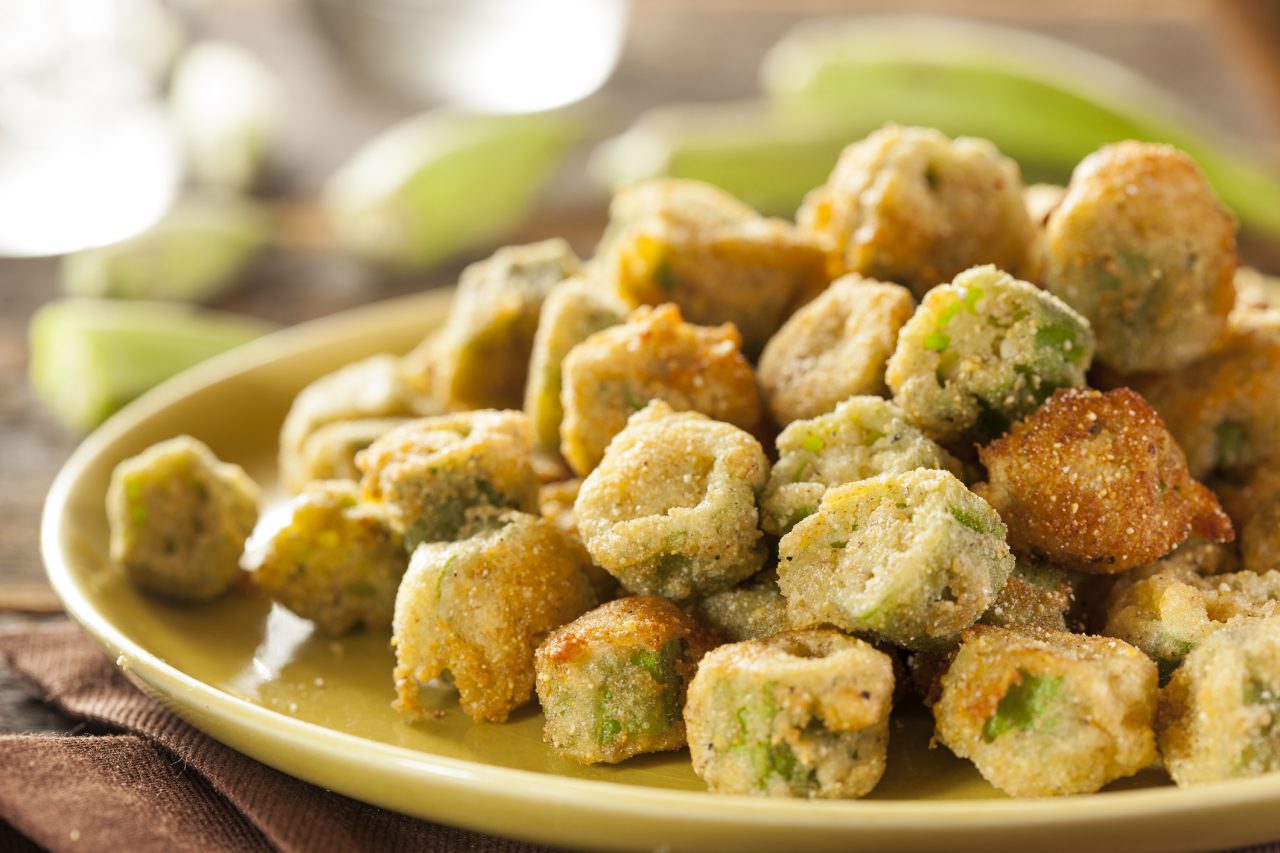People seem more willing than ever to try unusual vegetables. Produce sections offer dinosaur kale, speckled butter beans and avocados galore. Tatsoi shows up along with squashes that look like orange flying saucers. We embrace them.
However, one vegetable goes back generations but is treated like the star of a Cold War-era creature feature. Otherwise open-minded eaters flee the summer invader as if from Godzilla.
I will dare to speak its name: Okra.
Corn and tomatoes get lots of love. They’re the prom queens of the farmers market, centers of attention from their breathlessly anticipated arrivals until their sad autumn farewells. Instead, okra is the odd guy who asked you to the high school dance six months ahead of time and you immediately turned him down, saying you'd be busy washing your hair.
Okra generates more extreme venom than green peas, and they have some big haters. My husband would shoot a green pea just to watch it die.
Okra is a polarizing vegetable. You either love it or can't stand to be near it.
Why? Most okra-haters answer with one word: slime.
Yes, there is moisture inside the pods. I prefer to call it “natural thickener.” And it has many uses. Gumbo without okra would just be soup. The moisture naturally thickens the Cajun classic.
Okra is a survivor. Weather that makes other vegetables droop is a tonic to okra, making it harder to kill than Mothra. That's one reason that it's been common all over the south for a long time.
It's used for thickening in West African cooking, and India offers a spicy version of okra and tomatoes.
Like the bass line in a pop band, the humble pod enhances the aforementioned market rock stars, turning tomatoes and corn into a classic summer stew. Simmer it all together until the vegetables are tender (toss some little butterbeans in there too, if you have them), pour it over rice and you have dinner.
Remember, your mama did not say: “Eat your vegetables, except run far away from the okra."
Fortunately, others — like me — embrace okra. From July through October, okra is celebrated in festivals around the country, and there’s even a festival in Turkey. Some of the festivals began as jokes, but that’s OK — okra has a great sense of humor and a good personality.
I've never been to Delta State University in Mississippi, but I'll cheer for its mascot — the "Fighting Okra": a snarling okra pod.
If you're still stuck on the S-word, there are things you can do about slime.
Frying, which is the way most people encounter okra, eliminates the moisture. When sliced, tossed in breading (I like cornmeal), fried in hot oil and salted, okra becomes crispy, vegetable popcorn. The pods can be fried whole, too. Dip them in buttermilk and some flour and cornmeal, or try frying them in tempura batter.
Sautéing sliced okra in a small amount of oil before adding it to soup or stews can evaporate some of the moisture, if you really want to.
Grilling banishes the S-factor, too and adds a smoky flavor to the vegetable. Thread whole pods, ladder-like, on two wooden skewers (soaked for at least 30 minutes to prevent burning on the grill). The ladder effect makes the pods easier to turn over. Rub with olive oil, then grill, turning until they’re light brown. Salt, pepper and serve, or sprinkle with a little soy sauce or lemon juice.
My message is this: We gave peas a chance, so why not okra?
And in high school, I always did like the weird guys.









